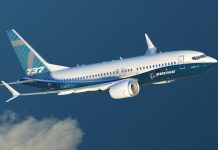The introduction of the Countering CCP Drones Act and the Drones for First Responders (DFR) Act has sparked controversy in the United States regarding local safety and national security.
While Washington imposes restrictions, local police officers, firefighters, and rescue workers across the country continue to embrace Chinese drones. The debate centers around the technological gap and cost-effectiveness of these drones, which are key factors behind their popularity in the US.
A Tale Of Two Bans
In 2017, the U.S. Army sounded the alarm, banning DJI drones (Chinese drones) due to their cyber vulnerabilities.
More recently, In April 2023, Florida enacted a state-level rule prohibiting its public safety agencies from using non-approved drones, including those from China, due to concerns about potential Chinese espionage, drawing criticism from first responders and some lawmakers.
Connecticut attempted to implement a similar ban on Chinese drones, but the state legislature did not pass the measure.
Introduction Of Legislation To Ban Chinese Drones
Lawmakers in the House and Senate are advancing legislation to prevent Chinese-made drones from entering the US market. Recently, legislators in Washington introduced the ‘Countering CCP Drones Act’ in March and the Drones for First Responders (DFR) Act in May.
Countering CCP Drones Act: The Countering CCP Drones Act has been incorporated into the draft of the National Defense Authorization Act (NDAA) for the fiscal year 2025 by the US House of Representatives Armed Services Committee, a crucial defense policy bill. The committee is currently reviewing the NDAA, and it is anticipated to progress to the House floor for further consideration.
This legislation aims to block new DJI products from entering the U.S. market. It would require the Federal Communications Commission (FCC) to add DJI to its ‘Covered List.’ If DJI is added to this list, the FCC would no longer be able to approve new equipment authorizations for DJI products in the United States.
According to this act, existing users of DJI drones would not face an immediate impact on their current drone fleet. However, the federal government could decide at any time to prohibit the use of DJI drones that have already been purchased.
Drones for First Responders (DFR) Act: This act seeks to balance enhancing national security with supporting domestic drone manufacturing. It proposes several measures to reduce dependency on Chinese drones, which are considered a national security risk due to potential data vulnerabilities.
One notable feature of the DFR Act is the implementation of incremental tariffs on Chinese-manufactured drones, starting at 30% and increasing by 5% annually. This strategy aims to curb the import of Chinese drones and make U.S.-produced drones more competitive. Revenue generated from these tariffs would fund the purchase of American drones for public safety departments.
The Dragon’s Grip
Da Jiang Innovations (DJI), China’s drone titan, already commands approximately 70 percent of the global commercial drone market and around 80 percent of the U.S. market.
Reports indicate that DJI is currently collaborating with the U.S.-based company Anzu Robotics to license its technology for sale in the American market.
Additionally, the Hong Kong-based Cogito Tech Company Limited registered with the Federal Communications Commission (FCC) in August 2023 to sell drones in the United States. Drone experts note that two of its drone products approved for sale in the U.S., the Specta Air and Specta Mini, bear striking resemblance to products manufactured by DJI.
Even drones produced by ‘Skydio,’ an American company, contain parts manufactured in China (although Skydio claims this rule doesn’t apply to its drones).
These developments suggest that China’s dominant drone companies are taking measures to ensure that their products reach U.S. consumers, even in the event that Congress enacts a ban similar to the one recently imposed on TikTok.
Popularity Of Chinese-Made Drones
Chinese-made drones remain popular among US law enforcement agencies. Despite restrictions imposed by Washington, local police officers, firefighters, and rescue workers nationwide continue to adopt Chinese drones.
However, this popularity presents challenges for agencies facing budget constraints, particularly in Florida, where replacing Chinese drones with alternatives at a comparable price point is difficult.
While public safety agencies are prohibited from using federal grants to procure Chinese drones, several agencies in states like Kentucky, New Jersey, and Connecticut have used their own budgets to make purchases. Despite the prospect of higher tariffs, many agencies express willingness to continue buying Chinese drones.
The Allure Of Affordability
The lack of viable alternatives to Chinese drones within the same price range is a significant concern. The ongoing debate revolves around the advanced technology and cost-effectiveness of Chinese drones, which are the primary drivers of their popularity in the US.
Although American drone makers strongly endorse these bills, experts underscore the significant price disparity between U.S.-manufactured drones and their Chinese counterparts.
U.S. drones are priced three to four times higher than Chinese models, even though they do not offer the same level of technology. Labor costs, production scale, and the expense of custom chipsets are identified as the main obstacles preventing lower prices for U.S. manufacturers.
The Association for Uncrewed Vehicle Systems International (AUVSI), representing U.S. drone manufacturers, acknowledges the technological gap but attributes it to DJI’s dominance in the U.S. market and subsidies from the Chinese government. AUVSI points out the challenge for many U.S. drone manufacturers to secure funding for expanding production, as demand from numerous users still favors inexpensive Chinese drones.
AUVSI underscores the significant difficulties U.S. manufacturers face in competing against a heavily subsidized competitor in the market, particularly in terms of cost factors, as discussed with Nikkei Asia.
While companies prioritize concerns about costs and technology, the federal government’s primary focus remains on security.

The Siren Call Of Chinese Drones
Defense experts highlight the issue with DJI drones, emphasizing the potential for active data collection during flights. While various US government agencies continue to purchase Chinese drones, there are warnings from Washington regarding the technology’s perceived risk to national security.
This has sparked a contentious debate over the balance between local safety and national security, adding complexity to Washington’s efforts to formulate a proactive yet pragmatic China policy.
The Dragon’s Defiance
Chinese drones dominate 92% of the first responder market in the U.S. While DJI did not reveal its precise revenue from the U.S. market, it affirmed that the country continues to be one of its largest markets globally outside of China.
The company denied accusations of providing backdoor access to data for the Chinese government or benefiting from unfair subsidies. According to DJI, their drones do not require internet connectivity for operation, and once activated, they can function entirely offline using “airplane mode” on the connected phone or tablet.
In response to the DFR Act’s proposal to impose higher taxes and potentially ban Chinese-manufactured drones, DJI criticized it as ‘xenophobia’ masked under national security concerns.
- Shubhangi Palve is a defense and aerospace journalist. Before joining the EurAsian Times, she worked for E.T. Prime. In this capacity, she focused on covering defense strategies and the defense sector from a financial perspective. She offers over 15 years of extensive experience in the media industry, spanning print, electronic, and online domains.
- Contact the author at shubhapalve (at) gmail (dot) com.




